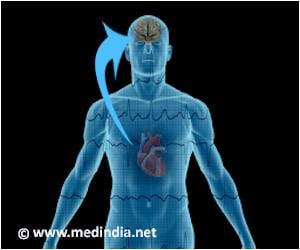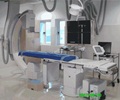Wavelet Transform-Fractal Dimension technique can de-noise lung and bowel sounds and could be used to examine fetal heart sounds more accurately.

‘The technique could clearly discern the fetal heart sounds in both authentic fetal recordings and simulations of healthy hearts.’





During pregnancy, monitoring the health and development of the growing fetus is vital. Monitoring the fetal heart rate is an important aspect of this, and doctors typically use equipment such as a Doppler ultrasound probe or an electrical fetal monitoring system to investigate heart activity. However, the equipment involved in these techniques is expensive and can be difficult to operate, meaning that only a specialist can use it. At present, pregnant mothers must travel to a hospital or clinic to undergo routine checkups so that doctors can assess fetal health. However, complications can sometimes arise with no warning, and without long-term monitoring between checkups doctors can't always spot them in time to avoid problems.
A simpler way to assess fetal health involves doctors examining the sounds in a mother's abdomen, by placing cheap vibration sensors on the mother's belly and recording the acoustic signals emitted by the fetal heart.
In fact, the technique is simple enough that a mother could potentially place the sensors on her belly in the comfort of her home and make recordings that her doctor can analyze later.
So far, researchers have found it challenging to accurately and reliably pick out the sound of the fetal heart from the recording. The low acoustic energy of the fetal heartbeat makes this difficult, along with conflicting sounds such as the mother's own heartbeat and breathing and noise from her digestive system. This means that doctors do not routinely use the technique to monitor fetal health.
Advertisement
"We wanted to see if a mathematical analysis technique called Wavelet Transform-Fractal Dimension, that has been successfully used to de-noise lung and bowel sounds, could be used to examine fetal heart sounds more accurately," says Elisavet Koutsiana, a researcher at the Aristotle University of Thessaloniki.
Advertisement
Using their mathematical technique to process the sounds, the team could clearly discern the fetal heart sounds in both authentic fetal recordings and simulations of healthy hearts, and only slightly less clearly in simulations of abnormally fast or slow heartbeats. They could still recognize the heart sounds even when unexpected noises were present.
In many cases, the team could discern the fetal heart sounds well enough that they could distinguish between the different segments of the fetal heartbeat, which could be useful for doctors in their assessment of fetal health.
"Our work suggests that there is potential for low cost and continuous recordings of fetal heart sounds in the home," says Koutsiana.
"We plan to continue the research with more real recorded signals to learn more about the fetal heart cycle and how it relates to health, and also to improve the accuracy of the system further. Our results should help doctors to make pregnancy safer."
Source-Eurekalert















